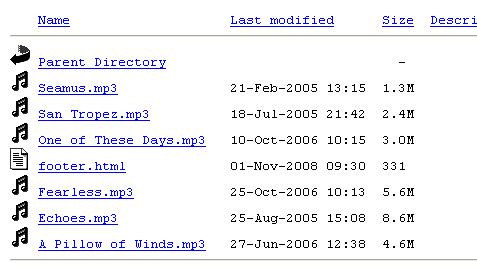FFmpeg: Comprehensive Audio Processing Techniques
FFmpeg is an immensely versatile multimedia framework that allows users to record, convert, and stream audio and video files. Renowned for its robustness and wide array of features, FFmpeg is a preferred choice for professionals and hobbyists alike for manipulating multimedia content. Developed under the LGPL or GPL license, it is available for Linux, Windows, and Mac OS X.
What FFmpeg Can Be Used For
FFmpeg can be employed for various tasks including but not limited to:
- Video and Audio Conversion: Transform media files from one format to another.
- Media Streaming: Stream audio and video in real-time over networks like the internet.
- Audio and Video Editing: Extract audio from video files, adjust codec, bit rate, and more.
- Thumbnail Generation: Create thumbnails for videos at specified intervals.
Working with Audio Files Using FFmpeg
Basic Syntax
Before diving into complex commands, it’s essential to understand the basic syntax of FFmpeg:
ffmpeg [global_options] {[input_file_options] -i input_file} ... {[output_file_options] output_file} ...- Converting Audio Formats
Transitioning between audio formats is straightforward with FFmpeg. For example, converting an MP3 file to WAV format can be done as follows:ffmpeg -i input.mp3 output.wav - Optimizing Audio File Sizes
To reduce the size of an audio file without significant loss of quality, adjusting the bitrate is an effective approach. Here, we convert an existing WAV file to a smaller MP3 file with a lower bitrate:ffmpeg -i input.wav -ab 192k reduced_size.mp3Here,-abspecifies the audio bitrate. - Changing Audio Channels
Converting a stereo audio file to mono, or vice versa, can be achieved by manipulating audio channels:- Stereo to Mono:
ffmpeg -i stereo_input.mp3 -ac 1 mono_output.mp3 - Mono to Stereo (Note: This does not create true stereo sound but duplicates the mono track):
ffmpeg -i mono_input.mp3 -ac 2 fake_stereo_output.mp3
-acsets the number of audio channels. - Stereo to Mono:
- Extracting Audio from Video
FFmpeg can strip the audio track from a video without re-encoding:ffmpeg -i video.mp4 -vn -acodec copy audio_output.aac-vnis used to disable video recording while-acodec copyavoids re-encoding the audio stream. - Adjusting Audio Volume
Increasing or decreasing the volume of an audio file is also possible:ffmpeg -i input.mp3 -filter:a "volume=1.5" output.mp3This command increases the volume by 50%. To decrease, use a value less than 1, such as 0.5.
Advanced Usage
FFmpeg is not limited to simple conversions. For instance, combining audio files, adding effects, and handling batch operations are part of its extensive capabilities.
Combining Audio Files
You can combine multiple audio files into a single file while maintaining the original quality:
ffmpeg -i "concat:input1.mp3|input2.mp3" -acodec copy output_combined.mp3The above examples of FFmpeg demonstrate just a fraction of what it is capable of. This powerful tool, when mastered, can perform virtually any audio-visual processing task. Combining its functionality with scripting can automate routine tasks, making it a valuable asset in any multimedia professional’s toolkit.
Some more examples designed to work with multiple files.
1. Convert All WAV Files to MPL3 with Specified Quality
This script will convert all .wav files in the current directory to .mp3 format using the libmp3lame encoder with a quality scale of 2.
for f in *.wav; do ffmpeg -i "$f" -codec:a libmp3lame -qscale:a 2 "${f%.wav}.mp3"; done2. Optimize All MP3 Files to a Lower Bitrate
To reduce the file size of all .mp3 files, this script re-encodes them at a bitrate of 128k.
for f in *.mp3; do ffmpeg -i "$f" -b:a 128k "${f%.mp3}_optimized.mp3"; done3. Convert All Mono Audio Files to Stereo
This command duplicates the mono track to create a fake stereo track in all .mp3 files.
for f in *.mp3; do ffmpeg -i "$foregroundColor" -ac 2 "${f%.mp3}_stereo.mp3"; done4. Reduce the Volume of All MP3 Files by 50%
This script decreases the volume of all .mp3 files by 50%.
for f in *.mp3; do ffmpeg -i "$f" -filter:a "volume=0.5" "${f%.mp3}_quieter.mp3"; done5. Extract Audio from All MP4 Video Files
This one-liner pulls the audio from .mp4 videos without re-encoding, preserving the original audio codec.
for f in *.mp4; do ffmpeg -i "$f" -vn -acodec copy "${f%.mp4}.aac"; done6. Combine Multiple MP3 Files into One
If you have multiple .mp3 files and need to concatenate them into a single file, the following can be used. Note: This method requires that all input files have the same audio codec and bitrate.
ffmpeg -i "concat:$(ls *.mp3 | tr '\n' '|' | sed 's/|$//')" -acodec copy output_combined.mp37. Convert All MP3 Files to WAV Format
This example script converts all .mp4 files in the directory to uncompressed .wav format.
for f in *.mp4; do ffmpeg -i "$f" "${f%.mp4}.wav"; done8. Batch Normalize Audio Levels of MP3 Files
To normalize the volume level of all .mp3 files, ensuring a consistent audio experience:
for f in *.mp3; do ffmpeg -i "$f" -filter:a loudnorm "${f%.mp3}_normalized.mp3"; doneThese examples harness FFmpeg’s power to efficiently process multiple audio files with a single command. Adjust the parameters as needed to fit various use cases or audio formats.
9. Convert Audio to a Different Format with Custom Sampling Rate
This script converts all .wav files to .mp3 format, setting a specific sampling rate of 44.1 kHz which is standard for high quality audio:
for f in *.wav; do ffmpeg -i "$f" -ar 44100 "${f%.wav}.mp3"; done-ar 44100sets the audio sampling rate to 44100 Hz.
10. Apply Audio Fade-in and Fade-out Effects
This command applies a 5-second fade-in and a 5-second fade-out effect to all .mp3 files:
for f in *.mp3; do ffmpeg -i "$f" -af "afade=t=in:ss=0:d=5,afade=t=out:st=$(ffmpeg -i "$f" 2>&1 | grep Duration | awk '{print $2}' | tr -d ','):d=5" "${f%.mp3}_fade.mp3"; done-afapplies an audio filter.afade=t=in:ss=0:d=5applies a fade-in starting at 0 seconds lasting 5 seconds.afade=t=out:st=...:d=5applies a fade-out. The start timestis dynamically calculated by extracting the duration (Duration) of the audio file and applying the fade out 5 seconds before the audio ends.
11. Extract a Specific Audio Segment
To extract a 30-second clip starting 60 seconds into the audio file:
for f in *.mp3; do ffmpeg -i "$f" -ss 60 -t 30 "${f%.mp3}_clip.mp3"; done-ss 60seeks to 60 seconds into the file.-t 30captures 30 seconds of audio from the start point.
12. Batch Normalize Audio Files Based on EBU R128 Standard
Normalization based on the EBU R128 standard is performed to handle loudness variations among multiple audio tracks:
for f in *.mp3; do ffmpeg -i "$f" -filter:a loudnorm=I=-23:LRA=7:TP=-2 "${f%.mp3}_normalized.mp3"; doneloudnorm=I=-23:LRNA=7:TP=-2sets the integrated loudness to -23 LUFS, with a loudness range of 7 LU and a true peak of -2 dBTP.
13. Creating an Audio Spectrogram
Generate a spectrogram image from an audio file:
for f in *.mp3; do ffmpeg -i "$f" -lavfi showspectrumpic=s=hd1080 "${f%.mp3}_spectrogram.png"; doneshowspectrumpic=s=hd1080generates a spectrogram image with a resolution of 1920×1080 pixels.
14. Combine Multiple Audio Files of Different Formats into One
Concatenate audio files while converting them into a uniform format:
ffmpeg -f concat -safe 0 -i <(for f in *.wav *.mp3; do echo "file '$(pwd)/$f'"; done) -c copy output_combined.mp3- This script uses process substitution (
<()) to create a temporary file listing each audio file’s path, which FFmpeg uses to perform the concatenation. -f concat -safe 0tells FFmpeg to concatenate the files listed.







